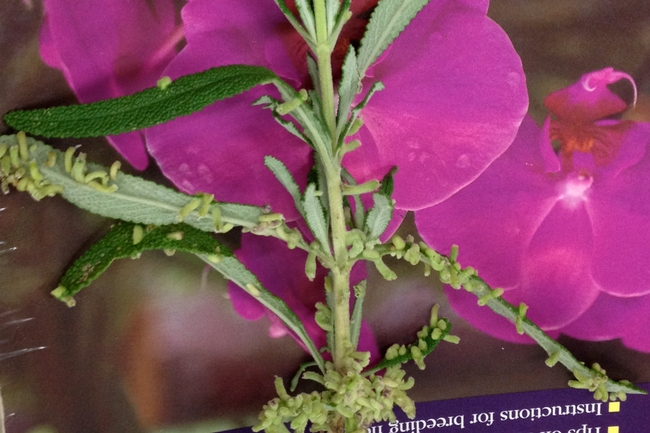One day recently, a client at the nursery where I work brought in a sprig of Salvia mellifera, Black Sage. She said it was all over her sages, all of them! The plants seem otherwise healthy. They are in a sunny spot, receive drip irrigation not too often, and were fine for years up until now.
Looking closely, I guessed it might be some kind of gall. We picked and poked at the protuberances and put it under our low power microscope, which revealed that the growths were tubular.
What is all over her Black Sage?
It is a midge - Rhopalomyia audibertae - that creates a gall on sages.
The plants affected by this little gallfly are Salvia melllifera - Black Sage, and Salvia apiana - White Sage. Many creatures spend part of their life cycles in a gall. Mites, certain aphids, moths, flies, and wasps are just a few. Their eggs are deposited on the plant, and when they hatch, the larvae start to eat.
It is not clear how the larva affects the plant tissue, whether it is secretions from the mouth or the other end! The plant tissue changes in weeks or months to envelope the little creature. It becomes a protective enclosure for the larva while it grows. Fortunately, it doesn't harm the plants. It just looks ugly.
In this case, the gall is a member of the Dipteral order of insects, a tiny fly – or midge - that borrows the leaf tissue of a couple familiar sages. There is another midge, of the genus Rhopalomyia, that looks similar, but it employs the Baccharis group of Chaparral plants, such as coyote bush, as its host. The midge on the Black Sage is Rhopalomyia californica, the Baccharis gall fly.
These creatures don't hurt the plant, and the distorted leaves can be cut back if desired.
For further information on galls, see:
UC_IPM Managing Pests in Gardens: Gall Makers, http://www.ipm.ucdavis.edu/PMG/GARDEN/PLANTS/INVERT/gallmakers.html
Bugguide (Hosted by Iowa State University Dept of Entomology), http://bugguide.net/node/view/376111
The Gall Midges of California Essig Museum of Entomology,essig.berkeley.edu/documents/cis/cis02_2.pdf
